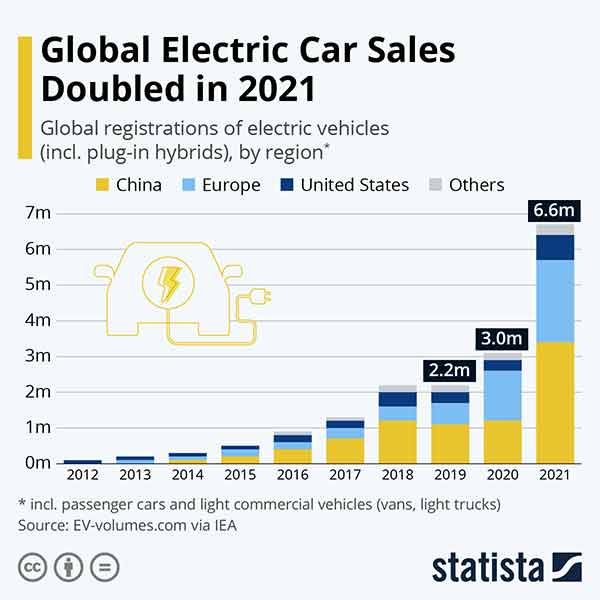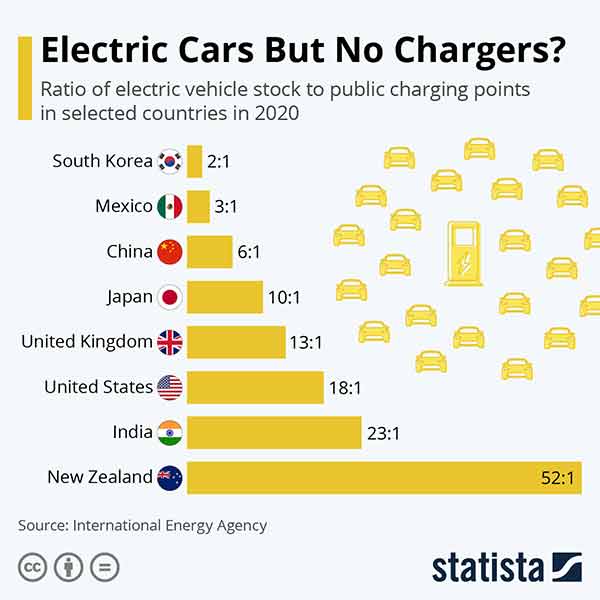Charging station infrastructure needs to intelligently harness data and gain critical insight to meet the demands being placed on it.
Clean source power generation is a top priority for utility companies around the world, and with good reason. Society today is far more climate conscious than previous generations, adopting technologies such as solar and smart thermostats at a faster rate than ever before. By far the most notable climate-conscious shift is the general move toward electric vehicles (EVs), which are likely to have a dominant presence on our roads within the next decade.

Last year, EV sales in the United States increased by more than 80%. Within the next three years, the International Energy Agency estimates the number of EVs on the road in the US could surpass 8 million, giving electric utility executives a lot to think about. Transitioning to EVs is a positive step for the environment, but there’s no doubt that a rapid rollout of EVs will also add a layer of complexity when it comes to managing the reliability of our power grids. Governments and utility companies can see these challenges coming, which is why they are already looking at new innovations in battery storage at the bulk electricity transmission level, as well as making widespread changes at the power distribution level. But how big are the challenges facing our energy supply grid?
And how can utility companies ensure that they are able to keep the lights on while consumers enjoy the benefits of EVs?
In developed countries, the average household uses roughly 2kW of power every day. If a household were to add one or two EVs into the mix, their usage could more than quadruple and easily hit 10kW each day – a complete shock to the system. To make matters more challenging, a large question mark still exists over how much energy is yet to be consumed by EVs that still need to be manufactured. Adding enough capacity to meet this unknown demand is comparable to trying to hit a moving target while blindfolded – and it will take widespread investment and forward-planning to get ahead of the curve.
Several countries are actively providing funding for utility companies to help them catch up and prepare for the future of EVs. The U.S. Infrastructure Investment and Jobs Act (IIJA), for instance, includes $7.5 billion in funding to incentivize the private sector to build 500,000 chargers to alleviate concerns around “range anxiety” – the fear of batteries running out on long journeys. Beyond the Infrastructure Bill, the IIJA has also earmarked more than $11 billion for grid modernization projects, as well as $12.5 billion for clean energy initiatives. This will include so-called “grid-scale energy storage”, which will be vital to making wind and solar viable sources of power for EV charging.
Grid-scale battery energy storage systems (BESS) are a great tool for utility companies to have in their arsenal as we move towards widespread EV adoption. These systems make it easier for utility companies to meet demand during evening energy surges – the time when EV owners will typically plug-in and charge their vehicles. BESS also helps make the grid more resilient by enabling microgrids that can maintain power when storms or wildfires knock out transmission lines.

With additional funding, many utility companies can begin to subsidize EV charging stations themselves. In the US, there are instances of power companies stepping up to cover these costs. A utility company in Missouri has agreed to cover up to 50% of the cost of charging stations at apartment complexes, offices, and commercial premises – indicating that private sector intervention is already underway. In examples such as this one, by funding charging ports at different locations, the burden on the energy grid will be more evenly distributed throughout the day and alleviate the pressure during the evening hours. With the opportunity to charge their EVs at work or while they’re out shopping, there will be less consumer demand for at-home charging – lightening the load for the substation and other infrastructure serving their neighborhoods.
As the complexity of the EV charging network increases, reliability, performance, and down-time become easier to predict – but only if the right data is gathered and shared with the relevant applications. This is where “edge nodes”, a computational device that can gather and transmit end-user information at the source, may be of particular use. Edge nodes can help to process vast amounts of data and make performance predictions in key areas around the grid. The artificial intelligence (AI) and machine learning (ML) insights from these data collection points will prove invaluable in the future, not only as we seek to balance the demand placed on our power grids, but in other IoT applications too.
Supporting investment in the grid serves the interests of both power companies and EV companies – and these two industries must come together to solve the challenges associated with EV adoption. From the rapid integration of renewables and DERs, to engaging with customers on new services, preparedness and adaptability will be key as the US gears up for the next era of transportation. Most importantly, they can work together to help cope with the inevitable surge in demand for electricity.
There’s still a great deal to do to ensure generation, transmission and distribution can all rise to the incoming challenge. Simply rolling out charging stations isn’t going to cut it. We need to ensure that charging station infrastructure is deployed intelligently to harnesses data and gain critical insight across the grid and the demands being placed on it.

About the Author:
Nisar Ahamad is the Americas Sustainability Lead for Energy, Utilities, and Chemicals (EUC) at Capgemini Engineering. He has over 23+ years of experience building and leading EUC, sustainability, industrial and communication businesses. Nisar has expertise in multiple engineering functions, and has supported teams in AMI (Advanced Metering Infrastructure), intelligent industry, communications (wireline, wireless 4GLTE/5G), AI/ML (Artificial Intelligence & Machine Learning) and product support services.
In this episode, I sat down with Beejan Giga, Director | Partner and Caleb Emerson, Senior Results Manager at Carpedia International. We discussed the insights behind their recent Industry Today article, “Thinking Three Moves Ahead” and together we explored how manufacturers can plan more strategically, align with their suppliers, and build the operational discipline needed to support intentional, sustainable growth. It was a conversation packed with practical perspectives on navigating a fast-changing industry landscape.